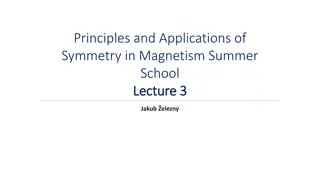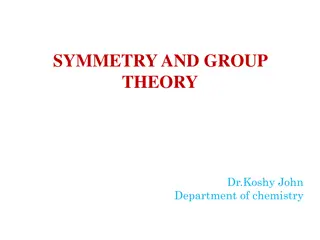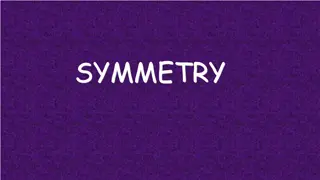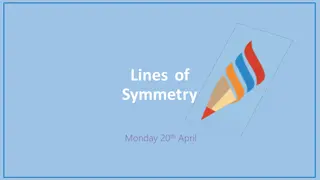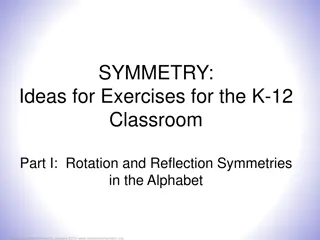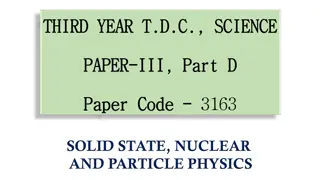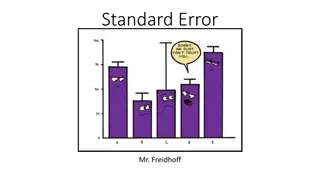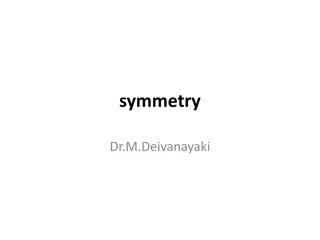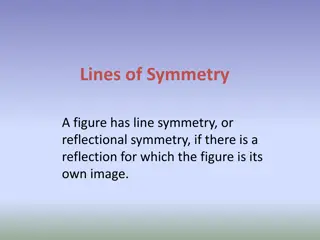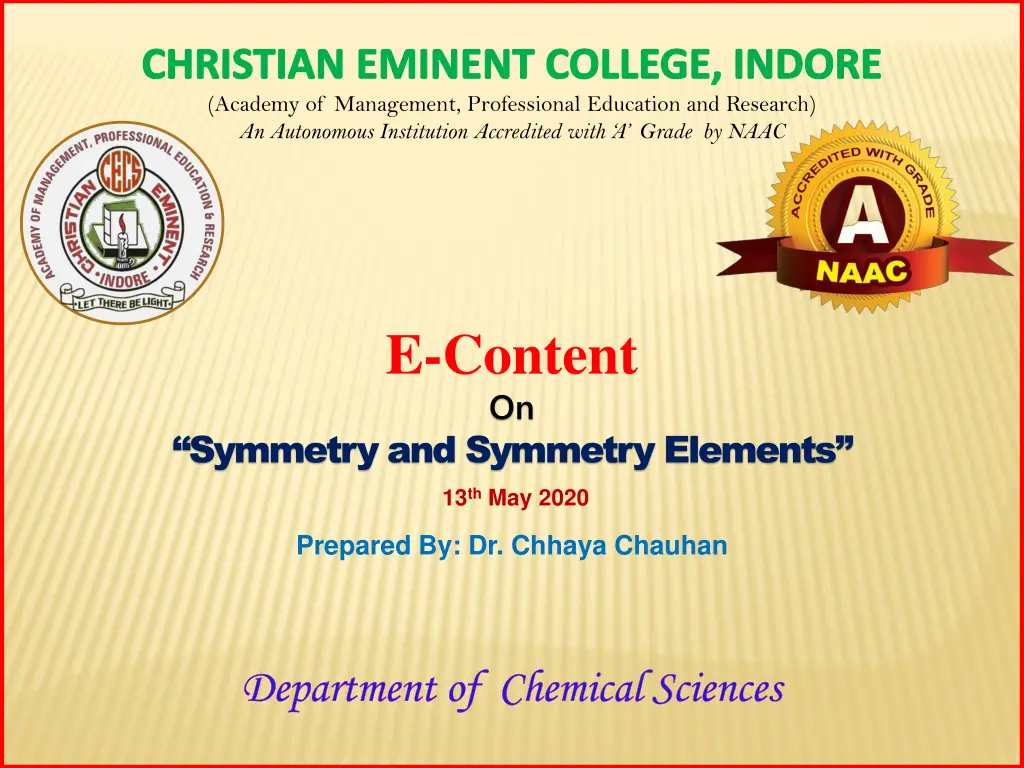
Understanding Symmetry: Elements and Operations Explained
Explore the concept of symmetry with a focus on elements and operations, including rotational symmetry, improper axis of symmetry, and identity elements. Discover the beauty and significance of symmetry in shapes like squares, flowers, and butterflies.
Download Presentation

Please find below an Image/Link to download the presentation.
The content on the website is provided AS IS for your information and personal use only. It may not be sold, licensed, or shared on other websites without obtaining consent from the author. If you encounter any issues during the download, it is possible that the publisher has removed the file from their server.
You are allowed to download the files provided on this website for personal or commercial use, subject to the condition that they are used lawfully. All files are the property of their respective owners.
The content on the website is provided AS IS for your information and personal use only. It may not be sold, licensed, or shared on other websites without obtaining consent from the author.
E N D
Presentation Transcript
CHRISTIAN EMINENT COLLEGE, INDORE (Academy of Management, Professional Education and Research) An Autonomous Institution Accredited with A Grade by NAAC E-Content On Symmetry and Symmetry Elements 13th May 2020 Prepared By: Dr. Chhaya Chauhan Department of Chemical Sciences
SYMMETRY Symmetry is when a shape looks identical to its original shape after being flipped or turned. Flowers , diamond , butterflies, leaves etc are highly symmetrical because of attractiveness of their forms and proportions.
SYMMETRY ELEMENTS A symmetry element is a geometrical entity about which a symmetry operation is performed A symmetry element can be a point, axis, or plane. A symmetry operation is the movement of a body (molecule) such that after the movement the molecule appears the same as before
THERE ARE FIVE BASIC KINDS OF SYMMETRY OPERATIONS
ROTATIONAL SYMMETRY(CN) A rotational axis of symmetry is one type of symmetry element. The actual performance of the rotation by the object is called a symmetry operation An object is said to "have a symmetry element" if the operation performed by the symmetry element yields a new shape that is oriented exactly like the original shape is oriented, even though the parts of the shape have moved. Rotational axes of symmetry are labeled as Cn, with the n standing for the 1/nth of a circle the object is rotated.
A SQUARE HAS WHICH TYPE OF SYMMETRY A C1 B C4 C C3 C2 D Correct Answer
IMPROPER AXIS OF SYMMETRY (SN) It is a rotation by 1/nth of a circle followed by reflection through a plane that is perpendicular to the rotational axis. The scroll is rotated by 180 about an axis, and then reflected through a plane that is perpendicular to that axis
IDENTITY (E) An element of a set which, if combined with another element by a specified binary operation, leaves that element unchanged. An example of an identity element is 0 in the equation 5+0=5. equation 5+0=5. This operation does nothing. It is simplest of all This operation does nothing. It is simplest of all the symmetry elements. the symmetry elements. It is the only element/operation by all It is the only element/operation by all molecules. molecules. the
PLANE OF SYMMETRY(SIGMA) A plane of symmetry is an imaginary plane that bisects a molecule into halves that are mirror images of each other.
INVERSION CENTRE (I) A molecule has a center of symmetry when, for any atom in the molecule, an identical atom any atom in the molecule, an identical atom exists diametrically opposite this center an exists diametrically opposite this center an equal distance from it equal distance from it. when, for O=C=O



